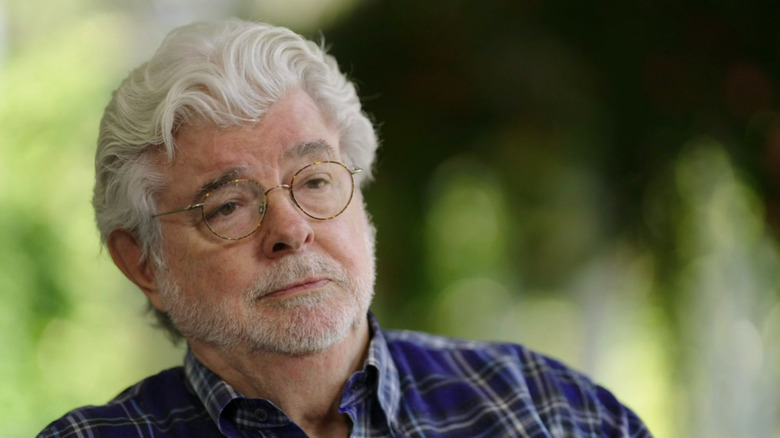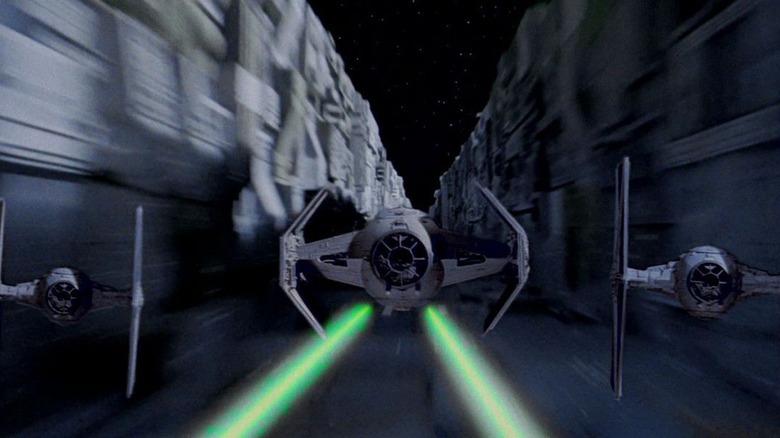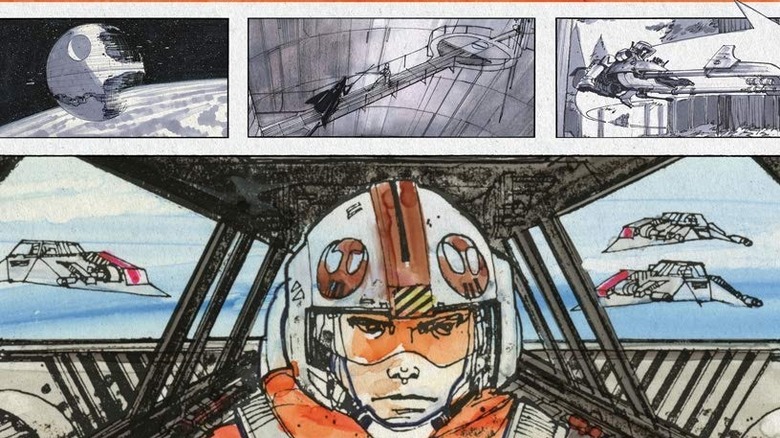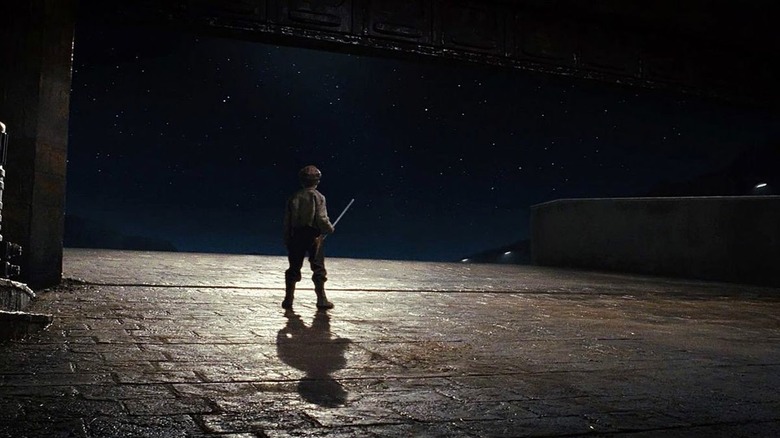Why ILM Was Different Whenever George Lucas Was In The Office
The biggest reveals and most highly-anticipated updates may have been announced already, but Star Wars Celebration is still going strong through the upcoming weekend and there's no lack of fascinating tidbits to uncover. The convention is held annually in Anaheim, California, with fans across the globe coming together to celebrate one of the most popular franchises to ever hit the big screen. /Film's Ethan Anderton has been covering the event extensively, attending various panels and reporting back to share the most newsworthy items with the rest of us.
Today, Industrial Light & Magic held a special panel billed as "a sneak peek at [the new documentary] 'Light & Magic' with an 'illuminating' discussion" that featured notable names such as writer Lawrence Kasdan and director Ron Howard, along with experienced VFX veterans Dennis Muren, Phil Tippett, Joe Johnston, and Rose Duignan and Lucasfilm executive vice president and general manager Lynwen Brennan, as well.
Attendees were regaled with war stories from the productions of various "Star Wars" movies of old, particularly concerning the immense influence wielded by "Star Wars" creator and visionary George Lucas.
'Part of the genius of George...'
Whatever else George Lucas is known for, the man deserves an endless amount of praise for reshaping the entire film industry — not just once with the use of both practical and visual effects with the original trilogy, but once again in pioneering the widespread use of digital filmmaking techniques with the prequels. The venerated VFX company ILM, naturally, owes everything to the filmmaker's sense of intuition and boundary-pushing. In the panel, Lawrence Kasdan spoke (via Zoom, as he wasn't personally in attendance) about the innovation that Lucas brought to the overall franchise:
"Part of the genius of George is that he knows what to ask in people ... he could make it clear where he wants to go. And even these amazing people he had working with him would often come to him saying, 'Well, I don't know how we're going to do that. But we will do it.'"
That structure and support came right from Lucas' presence, even extending to changing how the environment at ILM would change depending on whether Lucas himself was physically present or not. According to visual effects producer Rose Duignan:
"George is kind of both a producer and a director. And when he would sit in the screening room, he's a serious man ... he would look in the screening room and he loves organization. He loves efficiency. I would say, 'Well, we need 10 'CBD's today' — that stands for 'Could be better.' And I would need so many elements approved, and he would aim for that. And at some point, somebody was showing a shot and the optical person said, 'Oh, in the lower left hand corner there's a problem, so I'll redo it.' And George says, 'No, if they're looking in the lower left hand corner, then we have lost them.' So I thought that was really impressive, that he could balance."
'It was sort of like being at a film school'
To Joe Johnston, merely having George Lucas around became crucial to his development as a director. The ability to have access to one of the greatest and most experienced film professors of them all, in a manner of speaking, proved far more invaluable than the real thing ... even if that process meant adjusting to the way that Lucas liked to do things. As Johnston put it:
"George was really generous with his knowledge about filmmaking. When we were doing storyboards, in the art department we had three walls full of storyboards. George would come in for the first time and go through them. And he had a big red pen, and he would say, 'Eh, don't need that,' cross that out. 'Don't need that,' and would start crossing things out ... and right away, we'd learn not to put the originals on the wall."
But even beyond such amusing anecdotes about Lucas' legendary fastidiousness, Johnston explained how Lucas would apparently never hesitate to share what was on his mind when it came to explaining his thought process about what could be done better.
"It was almost like a combination of directing and editing and sort of general filmmaking all in one," Johnston went on to say. "It was sort of like being at a film school that didn't really exist, somehow. But he was always willing to explain why something wasn't working."
'He wrote all of this for 12-year-olds'
Through it all, however, perhaps what remains most impressive about George Lucas in the eyes of his co-workers at ILM was his personal commitment to being a family-first individual and a kid-friendly storyteller. This mentality seeped into every aspect of "Star Wars" for him, from the overall optimistic themes about good triumphing over evil, to the inclusion of certain divisive elements (Ewoks! Jar Jar Binks!) that grown-up fans of the franchise have always grumbled about. Believe it or not, "Star Wars" was meant for kids, first and foremost. ILM's Rose Duignan spoke in depth about this, saying:
"One more thing about George, he is a real family man. And if you read anything about 'Star Wars' and the whole legacy, he wrote all of this for 12-year-olds. That was his market, that was his target. Because he wanted to teach people about selfishness vs selflessness. And I feel that he set that tone at ILM and that's where the camaraderie and that's where the cooperation comes from. It's because he was pretty selfless. There was not a lot of ego involved in this, it was just, 'What does this show need?' And children are extremely important to him."
Amid all the cosplaying and exclusive items for sale, Star Wars Celebration functions as a periodic reminder of how much this material speaks to us as viewers on the broadest and most universal level possible. Sometimes, it's a good idea to trace all of this back to its original source and remember why we fell in love with "Star Wars" in the first place.



